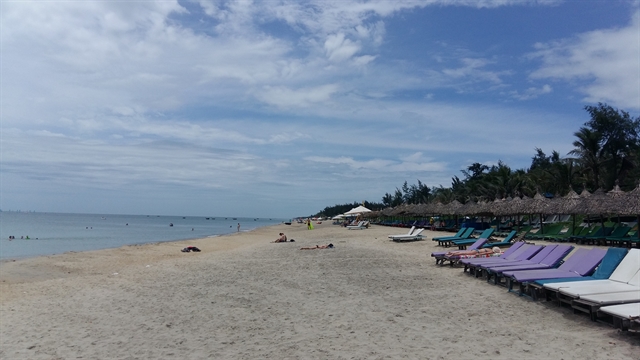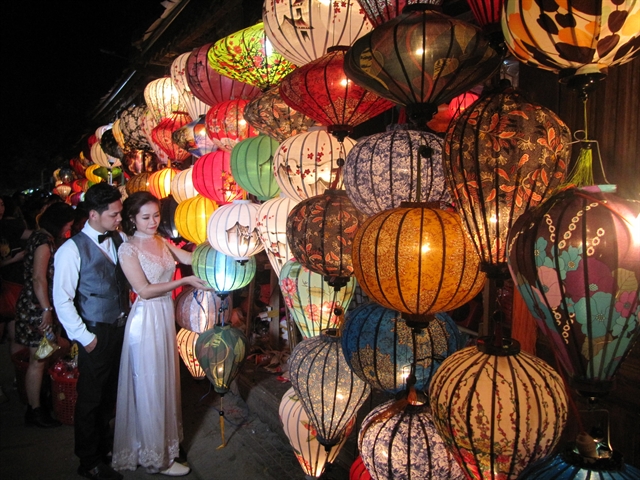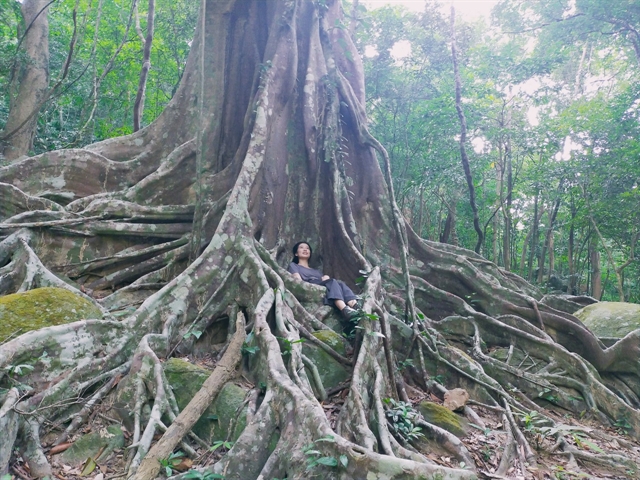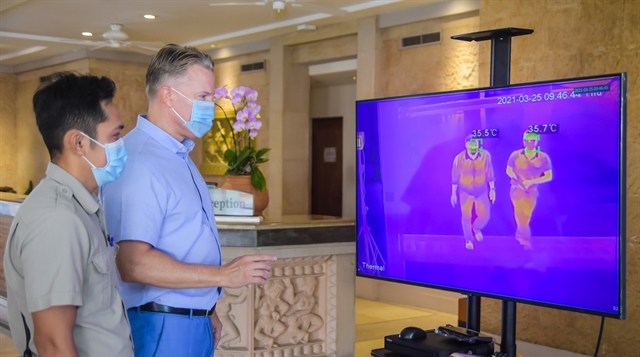[ad_1]

Hoài Nam
After years of successful operations in Hội An, the beachfront Sea’lavie Boutique Resort & Spa on An Bàng beach now only employs 20 per cent of its normal workforce, while room rates have been slashed by 50 per cent.
In days gone by the resort was packed with tourists, but it was almost empty during the two COVID-19 lockdowns between April and July.
To make matters worse, the property suffered serious damage from torrential rains, floods and winds that wreaked havoc in central Việt Nam in late 2020.
Travel agencies and hotels in Hội An saw some light at the end of the tunnel with 1,000 bookings from domestic tourists for the Tết (Lunar New Year) holidays in February, but then another wave of COVID-19 infections hit the country, dashing those hopes as domestic tourists stayed at home.
“It’s a terrible collapse. Our great efforts to stir up the deadlock of busy tourism in Hội An were in vain,” said Jenny Nguyên, the owner of the resort.
“I had to cut down our workforce from 22 to four, while room prices were offered at a 50 per cent reduced price – the lowest rate ever since the resort was launched several years ago,” she said.
“Flights being cancelled, fears of COVID-19 infection and floods and storms in the central region limited the approach of both international and domestic tourists to Hội An through 2020,” she said.
Despite revenue being slashed, the resort still has to pay an unchanged price for power and water consumption as well as waste collection and other taxes, Nguyên said.

Lê Quốc Việt, director of Santa Việt Nam company which owns and operates the Santa Villa in Hội An, said: “Three waves of COVID-19, constant floods and storms in 2020 have exhausted the tourism industry, pushing travel businesses to the edge of bankruptcy and leaving serious unemployment in the key ‘green’ industry in the central region that will take years to recover.”
Việt, who has 30 years of experience in the tourism industry, said COVID-19 had knocked out the industry throughout 2020.
“It’s unbelievable. Many branded resorts, hotels and restaurants were on sale or remained closed through the year. All staff had to do at some resorts was water gardens and perform electric system maintenance,” Việt said.
“At least 50 per cent of employees in tourism changed their jobs, while only 25 per cent kept working. Room capacity reduced by at least 70 to 80 per cent, while revenue from tourism slumped 90 per cent,” he said.
“All international flights stopped, but tourism businesses still have to pay for power, water and other fees at the same price as before the coronavirus,” Việt said.
He added that travel businesses struggled to find financial assistance from banks and tax reductions.
Losses
After a decade of stable growth, the central region’s tourism and services triangle of Thừa Thiên-Huế Province, Đà Nẵng City and Quảng Nam Province faced poor growth in 2020 due to the COVID-19 pandemic.
The triangle’s economic structure, which is mostly built on tourism and services due to its advantages of UNESCO-recognised world heritage sites, was floored by the pandemic.
Đà Nẵng’s tourism sector suffered a 56.4 per cent reduction in revenue, while Thừa Thiên-Huế had losses of $348 million from tourism.
Vice-chairman of the city’s Tourism Association, Nguyễn Đức Quỳnh, said COVID-19 had pushed tourism back to the starting point of 20 years ago in terms of revenue.

Trần Lê Nguyên, a manager of a restaurant and travel company in Hội An, said his two restaurants had been devastated by COVID-19.
“It’s like a dead town. Hội An used to be crowded from day to night, and weekends were so busy. However, all shops, restaurant and cafes in the Old Quarter have shut down. Lanterns are turned off, only dark and silence remain at night. Some native owners of old houses – where they live and do business – have left their doors open to help the memory of past busy days survive,” Nguyên said.
“We had to spend the reserve funds from previous years of success for daily technical maintenance and to pay key managers. Doors opened in the morning and closed in the evening to host only air, sun and staff going back and forth each day,” he said.
Hope
Việt, who manages the beachfront Santa Villa in Hội An, said tourism would resume once vaccines and safe travel methods have been provided.
He said travel habits will be completely changed in the post-COVID-19 time with a focus on small groups, families and MICE (Meeting, Incentives, Conference, and Exhibition) trips from neighbouring localities and regional countries.

“Local vaccinations, ‘vaccine passport’ acceptance, safe medical regulations, accommodation disinfection, face masks and safe distance in communications will be key in post-COVID-19 tourism activities,” Việt said.
“We could consider allowing travellers from countries where COVID-19 is well controlled, or vaccinated travellers,” he said.
“People from Japan, China, South Korea, Laos, Cambodia and Thailand could choose Việt Nam as a safe destination when the world could be possibly hit by the outbreak of the fourth wave of COVID-19,” he added.
Việt added that coronavirus arrival tests are needed at isolated hotels before joining pandemic restricted tours.
He said local trips and driving tours have been used to boost safe domestic tourism in the meantime.
Vice-chairman of the city’s Tourism Association Quỳnh called for vaccinating tourism workers before they host international visitors.
“We are thinking about seeking vaccines for all our staff at accommodations and convention centres in Đà Nẵng to receive tourists. We must be safe and healthy first,” he said.

“Giant body thermometers to check visitors’ temperatures will be installed at resorts and convention centres. Rooms and public space should be arranged at a safe distance from people to people, while disinfection activities must be done regularly,” he added.
Quỳnh, who is also general manager of the five-star Furama Đà Nẵng resort, suggested healthcare and yoga tours should be offered in destinations in central Việt Nam.
“Visitors have survived COVID-19, and they are aware of the need to improve their health. So, tour services focusing on health and relaxation for family and small groups will be designed as unique services in the post-pandemic world,” he said.
The tourism associations of Quảng Nam, Đà Nẵng and Thừa Thiên-Huế have inked an agreement to boost post-COVID-19 tourism in the region in 2021. — VNS
[ad_2]
Source link